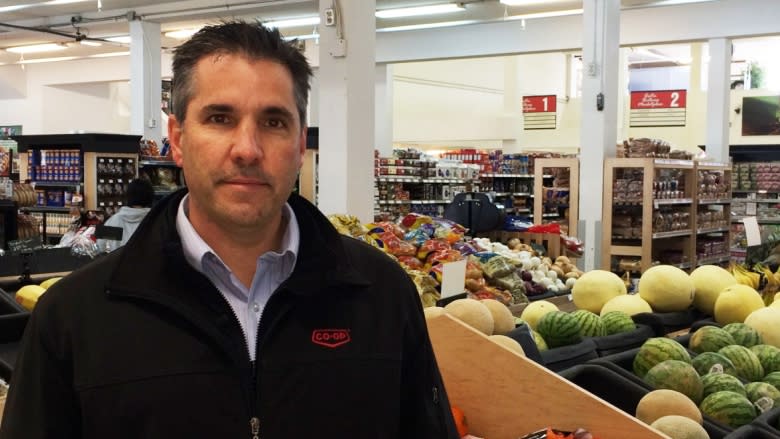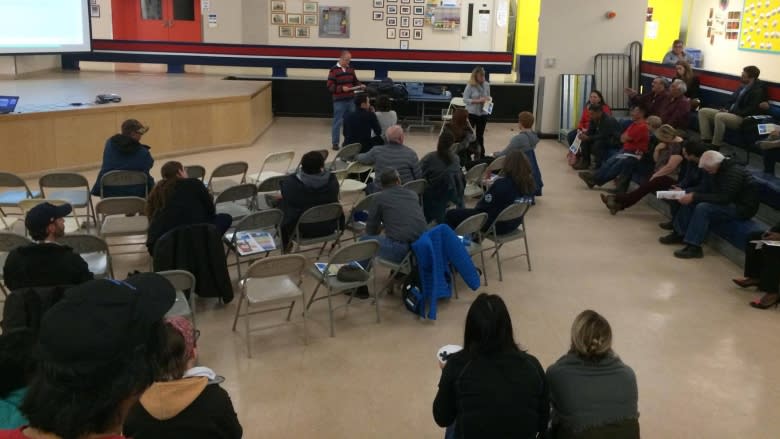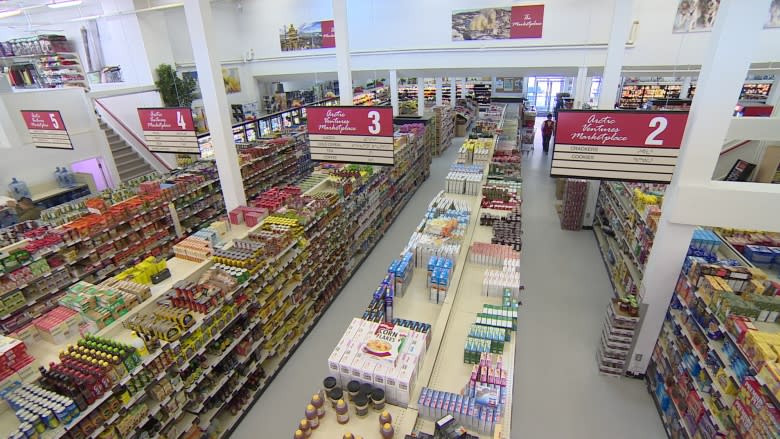Nutrition North budget 'certainly not enough,' says major Northern retailer
As Northerners suggest improvements for Canada's troubled food subsidy program, one of the region's biggest retailers says the program is ill-equipped to fully address the issue of high prices and food insecurity.
This fall, representatives of Nutrition North Canada are travelling to up to 20 communities gathering opinions on how the program can be improved.
Indigenous and Northern Affairs Canada, which runs the program, said it could not provide an interview about Nutrition North, but confirmed it is looking to make the program "more transparent, cost-effective, and culturally appropriate."
"We want to explore solutions developed by Northerners for Northerners," the department wrote in a statement.
That's welcome news to people in Nunavut, where food insecurity rates are four times the national average — and actually increased after Nutrition North was introduced.
But at this week's public consultation in Iqaluit, the government made clear that one part of the program was not up for discussion: the size of its budget.
Nutrition North cannot 'bridge the gap'
This year's federal budget committed $64.5 million over five years for the Nutrition North program, starting in 2016–2017. There was also additional funding for the 37 new communities that are set to begin receiving the subsidy this Saturday.
Duane Wilson, Arctic Co-operatives Ltd.'s vice president of merchandising and logistics, says the budget is "certainly not enough to bridge the gap between North and South."
"I think it's very evident," said Wilson. "The cost of food is still high."
Each year, the budget increases by five per cent to cover inflation and the projected population growth among Northern communities, the department told people in Iqaluit at the consultation.
Wilson says that's not a fair assessment, since the increase doesn't take into account rising freight costs.
"The value of the subsidy is actually being eroded every year."
'Environment of mistrust'
During the consultation many Iqaluit residents complained that inferior products are sold for exceptional prices, arguing that retailers are shortchanging customers in favour of wide profit margins.
Most people in attendance readily shared stories of bringing home food they later found to be mouldy or past the due date. Many questioned whether the full subsidy is even passed on to consumers — a common concern, which echoes findings from Canada's auditor general.
While retailers were not formally invited to the public meeting, Wilson flew to Iqaluit so he could get "a better sense of the tone and context" of the discussion.
"It's very evident that there's kind of an environment of mistrust," he said.
Wilson also noted the high cost of running any kind of business in the North — including retail — where things like power, fuel and rent simply cost more than in the south.
Subsidizing transportation only part of the issue
Those costs were the subject of a substantial report by Enrg Research Group., commissioned by Indigenous and Northern Affairs Canada.
"Operational costs for retail outlets are much higher in the North compared to similar operations in the South," the analysis found.
In particular, it pointed to bigger and more expensive warehouses, electricity rates "five to ten times greater than in the South," and costs for repairing and maintaining stores that far outstrip comparable southern retailers.
"There is an assumption by many residents that the NNC subsidy should make it possible to have southern prices in their local store," the group wrote, noting a "deeply rooted misconception."
"Scant allowance is made by local residents for the share of the price difference that is attributable to other costs of operation."
In summary, the report says the program addresses the "most pressing concern of retailers" but is only part of the solution when it comes to keeping families from going hungry.
The flour problem
Residents in each community consulted so far have suggested there are some basic food ingredients that must be given a higher subsidy.
Flour, which is on the lower subsidy level, was singled out, but Wilson says residents need to understand that will require a "trade off."
In Iqaluit, the higher subsidy rate is $2.30/kg, which means if flour is upgraded a ten-kilogram bag would be subsidized by $23.00 — if the product is flown to the community.
"We really need to ask ourselves whether we think that it's a good use of public funds to spend $23 to bring a 10-kilogram bag of flour to Iqaluit when there's already a cheaper way to do it via sealift," Wilson argued.
"And whether that $23 is better put into things where sealift isn't an option — things like milk, bread, eggs and other perishables."
One way to manage costs would be removing some items from the program, removing some communities from the program or reducing the subsidy in some communities, Wilson said.
Indigenous and Northern Affairs Canada says it will take into account the findings of this year's consultations as it looks at options to improve the program in the future.

 Yahoo Finance
Yahoo Finance 








